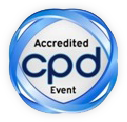
Mohammad Hossien Feiz Hadad
Ahvaz Jundishapur University of Medical Sciences, Iran
Title: Presence of multiple waterborne parasites related to different water resources, Dehloran, Southwest, Iran, 2016
Biography
Biography: Mohammad Hossien Feiz Hadad
Abstract
Introduction: Without clean water there is no secure for health and social welfare. Water is the most important element in the universe and preventing of water pollution is vital for creature survival health. Centers for Disease Control and Prevention (CDC) affirm that numerous microorganisms as well as parasitic agents can be passing on by different sources of water which may contaminate human beings and animals. This study intended to investigate the presence of parasitic elements in Dehloran water resources applying Lugol's iodine and modified Ziehl-Neelsen stain methods.
Materials & Methods: A total of 36 water samples were examined from water resources within the study district. The samples were collected from pits by accumulated water and channel water. In another study, according to similarity of population density, 50 household filter systems were collected randomly from five districts of the city (10 filter of each district; North, South, East, West and center). Three samples were prepared from each filter; one liter of pre-filtration, one liter of post-filtration and one sample of the filter system itself. Collected samples were examined for parasitic agents by Lugol's iodine and modified Ziehl-Neelsen stain methods using light microscopic.
rnrn Results: None parasitic element was identified using above methods inprepared samples from household filter systems. However, examined 36 collected water samples from other sources revealed 5 different strains of active stages of parasitic organisms, of which 3 strains (60%) were potentially pathogenic and 2 (40%) non-pathogenic. Infective stage strains included Entamoeba histolytic/dispar, Entamoeba coli, Blastocysts hominies, Giardia cyst and Cryptosporidium oocyst like. The study also confirmed that distance between water sources and starting place of contamination, type of water samples and chlorination status had significantly statistical relationship with prevalence of contamination (p<0.001).
Conclusion: Water resources (groundwater and surface water) could directly bond with each other. If there is a contaminated source in the vicinity of a healthy source, potential for pollution is very high. Consequently, in line with the outcomes and in view of the direct connection between safe water and human health, proper performance of providing hygienic drinking water should be imposed.

